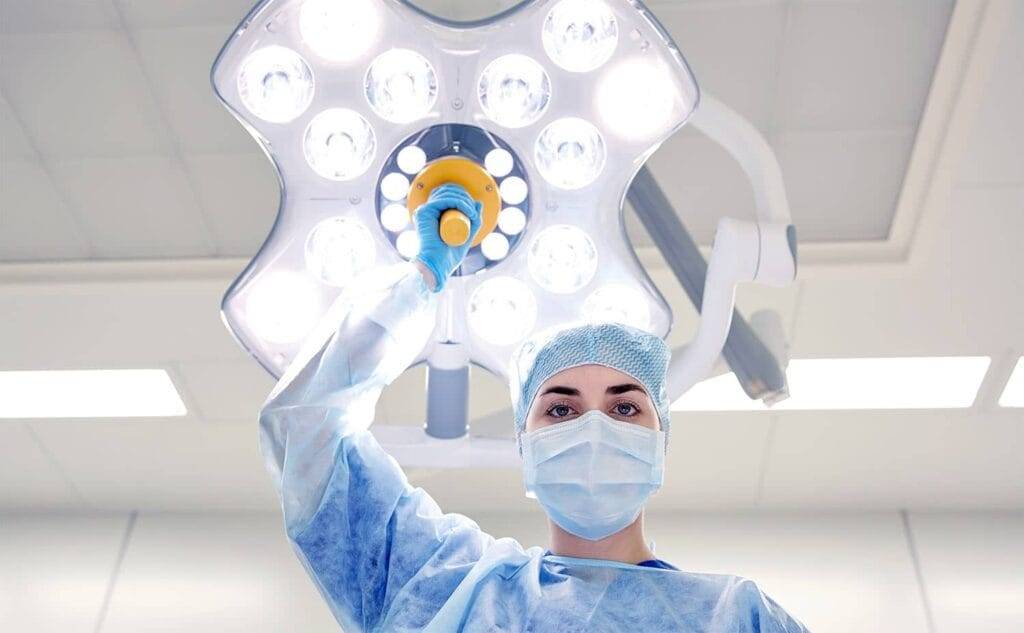Address
304 North Cardinal St.
Dorchester Center, MA 02124
Work Hours
Monday to Friday: 7AM - 7PM
Weekend: 10AM - 5PM
Welcome to My Blog!
Before we dive into the content, I’d love for you to join me on my social media platforms where I share more insights, engage with the community, and post updates. Here’s how you can connect with me:
Facebook:https://www.facebook.com/profile.php?id=100071234835011
LinkedIn:https://www.linkedin.com/company/74943205/admin/dashboard/
YouTube:www.youtube.com/@shandongexpertmedicalequip4695
TikTok:www.tiktok.com/@expertmedical
Now, let’s get started on our journey together. I hope you find the content here insightful, engaging, and valuable.
The manufacturing of medical devices is undergoing significant transformation as we progress through 2024. Driven by technological advancements, evolving regulations, and shifting market demands, the industry is adapting rapidly. This blog explores the key trends shaping manufacturing for medical devices this year, highlighting innovations, challenges, and future directions. Understanding these trends is crucial for stakeholders aiming to stay competitive and compliant in this dynamic field.

The Internet of Things (IoT) is increasingly being integrated into medical devices, enhancing connectivity and data collection. IoT-enabled devices allow for real-time monitoring, remote diagnostics, and improved patient care. This trend reflects a shift towards more interconnected and intelligent medical systems.
Artificial Intelligence (AI) and Machine Learning (ML) are revolutionizing medical device manufacturing by enabling predictive maintenance, optimizing production processes, and enhancing device functionality. AI algorithms help in analyzing vast amounts of data to improve design and performance.
Personalized medicine is gaining traction, driving the need for customized medical devices tailored to individual patient needs. Advances in 3D printing and additive manufacturing are facilitating the production of patient-specific implants and prosthetics.
The integration of genetic and health data into the design process is leading to more precise and effective medical devices. Data-driven approaches enable manufacturers to develop devices that better address specific medical conditions and patient profiles.
As the medical device industry evolves, so do regulatory requirements. Compliance with new regulations and standards is essential for market entry and patient safety. Manufacturers must stay updated on changes in FDA guidelines, CE marking, and other international standards.
Quality management systems (QMS) are becoming more stringent, emphasizing the need for robust documentation, traceability, and risk management. Enhanced QMS practices help ensure that medical devices meet the highest safety and quality standards.
Sustainability is a growing concern in medical device manufacturing. The industry is exploring eco-friendly materials and sustainable practices to reduce environmental impact. The use of recyclable and biodegradable materials is becoming more prevalent.
Manufacturers are implementing energy-efficient processes and technologies to minimize their carbon footprint. Innovations in production techniques and energy management contribute to more sustainable manufacturing practices.
Innovations in materials science are leading to the development of new, high-performance materials for medical devices. Advanced polymers, composites, and nanomaterials offer improved functionality and biocompatibility.
The implementation of smart manufacturing technologies, such as robotics, automation, and digital twins, is streamlining production processes. These technologies enhance precision, reduce errors, and increase overall efficiency.
Telemedicine is influencing the design and manufacturing of medical devices. Devices equipped with telemedicine capabilities enable remote consultations, diagnostics, and treatment, expanding access to healthcare services.
Global supply chain disruptions have impacted the availability of raw materials and components. Manufacturers must navigate these challenges by diversifying suppliers, increasing inventory, and adopting flexible production strategies.
The integration of digital technologies in medical devices introduces cybersecurity risks. Ensuring robust security measures and data protection is crucial to prevent unauthorized access and safeguard patient information.

Robotics and automation are expected to play a larger role in medical device manufacturing, enhancing precision and efficiency. The development of advanced robotic systems and automated processes will drive innovation and productivity.
Regenerative medicine is a rapidly growing field that is likely to influence the future of medical device manufacturing. Innovations in tissue engineering, stem cell therapy, and bioengineering will lead to new opportunities and challenges in device development.
As emerging markets continue to grow, manufacturers will need to adapt their strategies to meet the demands of diverse regions. Understanding local regulations, market needs, and distribution channels will be key to success in global markets.
| Trend | Description | Impact |
|---|---|---|
| Integration of Digital Technologies | IoT, AI, and ML enhancing connectivity and functionality | Improved patient care and device performance |
| Focus on Personalized Medicine | Customization and data-driven design | More precise and effective medical devices |
| Enhanced Regulatory Compliance | Evolving standards and robust QMS | Increased safety and quality assurance |
| Sustainability and Green Manufacturing | Use of eco-friendly materials and energy-efficient processes | Reduced environmental impact and carbon footprint |
| Smart Manufacturing Technologies | Robotics, automation, and digital twins | Enhanced production efficiency and precision |
The manufacturing landscape for medical devices in 2024 is marked by rapid technological advancements, increased focus on personalization, and heightened regulatory scrutiny. Staying abreast of these trends is essential for manufacturers seeking to innovate and excel in a competitive market. Embracing digital technologies, prioritizing sustainability, and addressing emerging challenges will be key to achieving success and advancing the future of medical device manufacturing.
Key digital technologies include the Internet of Things (IoT), Artificial Intelligence (AI), and Machine Learning (ML). These technologies enhance device connectivity, functionality, and data analysis capabilities.
Personalized medicine drives the need for customized medical devices tailored to individual patient needs. Advances in 3D printing and data-driven design enable the creation of patient-specific implants and prosthetics.
Regulatory standards for medical devices are continuously evolving, with updates to guidelines from agencies such as the FDA and changes in international standards. Manufacturers must stay informed about these changes to ensure compliance.
Manufacturers are adopting eco-friendly materials, energy-efficient processes, and sustainable practices to reduce environmental impact. This includes using recyclable and biodegradable materials in device production.
Current challenges include supply chain disruptions, cybersecurity risks, and the need to navigate evolving regulatory standards. Addressing these challenges requires strategic planning and robust risk management practices.
